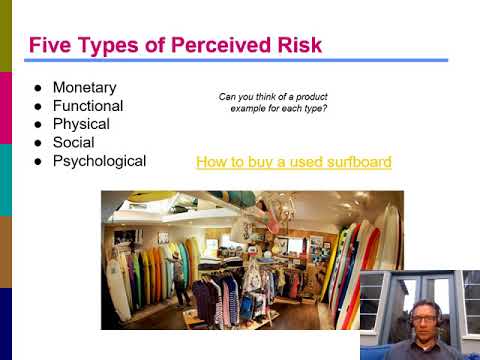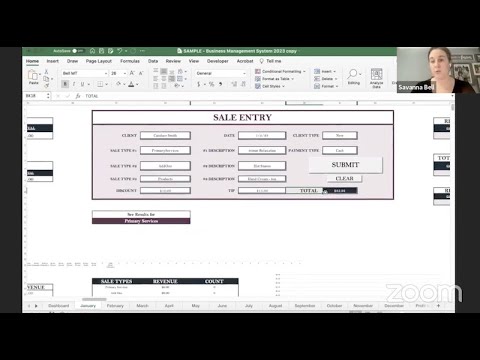Week 4 Consumer Behavior Lecture 2

Hey. Students, welcome to week 4 lecture 2, we're talking about consumer, behavior, so. This. Second lecture is going to talk about decision. Making the, steps that we go through to. Rationalize. Our purchases. And I'm, going to focus in on three, types of decision making cognitive. Habitual. And, affective. And. Your. Learning objectives, are listed here and my. Goal for, you out of finishing. This lecture, is to understand, these different categories what's. Cognitive, decision-making, what's habitual, and what's. Effective and again. These. Definitions. Are in these slides but they're not going to be in the textbook, resources either. The textbook or the AMA dictionary, so make, sure you take good notes on these slides in this lecture, alright let's, dive in. So. The first thing we want to talk about is, cognitive. So cognitive, decision-making. When you're purchasing products or services, means. That you're simply your, thought process. Whether. It's, actual, or not is you believe that you're making some type of analysis. Some type of rational. Decision-making. In, the, process, for making a purchase and there's a sequence, to your rational, decision-making, we're, going to focus on this one first. So. One of the things that drives a, cognitive. Process in the purchase of your product, is. How involved are you with the product so we, have products that are high involvement products, and products, that are low involvement products, and, high involvement product, would be like as you see here in this slide purchasing. A wedding dress there's, gonna be a lot of cognitive, process, and evaluating, alternatives. You, only get married three or four times I'm just kidding you. Know but the the, there's. A lot of involvement because this is the type of product, that warrants a lot of involvement other things that are highly involved products would be things like a car gonna, be sitting in it it's a reflection of your image. How. Certainly, you might raise a family in it so these are all highly involved products, on the, other spectrum there's involvement, products, things like a candy bar at a Czech Stan just, an impulse buy you're not really doing a lot of cognitive. Process. Around that purchase, so, certain products, by, the nature of the product itself drive.
A Lot, of involvement and a lot of cognitive process, in the decision-making, another. Driver of involvement is the, message the media message the advertising. Message that you're, interfacing, with. Something. Like a, radio. Ad you're driving, you're kind of distracted, you're probably not really paying much attention to, that ad versus. Say, a print ad in a magazine you. Subscribe, to that magazine you're sitting down you're, leisurely, reading, the magazine, so. A print ad is going to have more involvement with, the consumer, and it's. Going to instigate, more. Decision-making. Just. By the nature of being a print, advertisement. So. Different. Types of media message just. Drive. More involvement, with the consumer and puts. Them in a decision-making. Framework when, considering that product, the. Third thing that drives involvement. And hence, cognitive. Process, and decision-making. For purchase is the. Situation, itself where you're purchasing, the product, so, you see, a picture here of Starbucks. Obviously. We can get premium coffee at a number of locations most, gas stations have. Premium coffee even, fast-food restaurants, have quote premium coffee nowadays but. Why is Starbucks, still so successful, in having lines people, getting. Coffee well. Part of it is the situation that they've created the. Founder Howard Schultz said that he wanted Starbucks, to be the third place, what. Are the three places people, go to work people. Go home and then, they have a place where they socialize, and he wants Starbucks to be that third place so they, have music they have Wi-Fi people. Hang out they do work there and. They're. Creating a situational. Involvement with. Their product. Even. Something like fast food you, can get a burger at a number, of different places and they are kind, of a commodity product to be honest but. Why is in and out so successful, why, is in an out perceived, as being fresh, part. Of what they've done is when. You go through their drive you notice that they have windows, into, the kitchen and you can see them making your food and that.
Process Of seeing them making the food you, have some level of entertainment. And also involvement. With the process, so. Situational. Involvement message. Involvement, and product, involvement, can, all lead to a. Cognitive. Process for, a decision making and purchasing a product. Another. Factor, that drives, a, cognitive. Decision-making, process, for purchasing, products, is the, amount of risk in purchasing, that product so, when there is more risk we. Want more information. We, do a more extensive search and, we're. In a cognitive decision-making. Process, so. Think about what, types of risky products have you considered, lately and did. You do a fair amount of research and were you in a cognitive decision-making. Process, to purchase that product so. Risk. Is another factor. And. This. Slide gives you the different types, of risks. We. Have monetary, functional. Physical. Social, and psychological so. Let me give you some examples for each of those so expensive. Products, have monetary, risk right buying a house, but, anything that you purchased that is expensive by. The nature of it being expensive, it has more, risk, so. That's going to lead you to want, to do a cognitive decision-making. Process. Functional. Risk functional. Risk is is the product going to do what. I want it to do and I'm, putting surfboards, up here as an example I surf and and. If any of you have ever surfed or are surfers you, know that different boards have different performances. And different waves require, different boards, and different riders need different boards so. You. Can buy a surfboard. But, it may not work for you so, it may not work for your body weight and your your, style of surfing or even the types of waves that you serve so, surfboards, are a type of product that have a lot of functional, risk is it going to do what I want it to do is, it going to function the way I want to function it could be consumer, electronics. Maybe you're buying. Something. Online then you have a picture but. You don't know if. It's, gonna work the way you intended, it to work so we require cognitive. Decision process, a third. Type of risk is physical. Risk and that, is is the product actually gonna put me in some danger, so, an example there would be like us if you buy a skydiving. Package, for someone's birthday and yourself, or maybe. You go bungee jumping, but. Are, their risk and when there's when there's physical risk we're, gonna be in a cognitive decision-making. Process, wait a minute I need to think about this right. Social. Risk is, purchasing. This product gonna, make me look like a fool right where am I going to look bad so, fashion. Would certainly be in this category you, know women have a lot more pressure. On them regarding fashion, and appearance, perhaps than men, but. We all face some some some, social, risk around the fashion, choices that we make, so, clothing, would certainly be. Present. A social risk and the, last one is psychological, am. I going to feel guilty or bad about my purchase. Like. Luxury, goods if you bought something super, expensive and then later you kind of have buyer's remorse and, I shouldn't you, have some purchase shame for, your product, so. All of these risks, when there's risky products, it puts us into a cognitive, decision-making, process, a classic. Example of a product where it hits a lot of these risk. Factors would. Be an, engagement, ring so. Ladies, be kind to the men because if you think about it when they're purchasing, an engagement ring certainly. It has monetary. Risk it's expensive. It's. Also going to have some social. Risk. Is. You, know if she says, yes and she's wearing the ring is it going to meet. The standard, wears, the ring it looks awfully small or. It's ugly right. So there's, there's social risk both for you as the purchaser, and your. Fiance. Who's wearing the ring. You. So. Take a minute to review, this slide and it gives you product, examples, for each of the different types of risks, as marketers. It's important to know, what. Type of risks, are associated, with the purchase of our products take. A minute to review the slide on your own. This. Slide gives an ad example, of a, deodorant, company. Appealing. To social risk but. Think about it for yourself what types of risky products, have you considered, lately and what. Types of risks. Came up for you as you were cognitively. Evaluating. That purchase, so. Take a minute and reflect on that. Okay. So now I want to talk about the five. Stages of the cognitive, decision. Making process, for purchasing. First. Up we have problem recognition, I have, an unmet need I need to purchase something to solve this problem, that's step one step.
Two Is I need, to get some information so, online searches. To. Get. Some information about what's out there to possibly, solve this problem. Step. Three is, evaluation. Of alternatives, now, that I've got some information I see some different choices here and. Which. One we're not going to buy step. Four is you actually make. A choice on a. Purchase product and the. Step five is the actual, outcome so even after the purchase we are still. Cognitively. Evaluating. Our purchase, so. I'm gonna elaborate, on each of these stages in the following, slides. So. In the first step the problem recognition, step. The. Reason we have a problem in the first place is because. There's, a gap between. Our. Actual. State where we're at and the. State that we want to be at and I, think I mentioned this in the prior lecture that the bigger the gap the, more the drive to solve the problem right so we. Have a. Need. Recognition, when. There's a gap between our. Ideal. State and our, actual state that's. A problem or we, see an opportunity, for things to get better, but. Bottom line is when, there's a gap between our current state our actual state and the, ideal state that we want to be at then. We have a problem recognition, stage that's. Then. We get into information search step, 2. And. In. Our information search, this. Is where we're gonna survey the environment, and get. The appropriate data make a reasonable decision and. Now. There's so many cyber, media Ares by that I mean places, like Amazon, where. They give you all this information even, Google and they, give you all, these comparison, products, or similar products people also purchased, and you have custom reviews it's all there, available. To you so. We, are in the information age this step is now very easy. So. The next step is we get to evaluation. Of alternatives, this is an interesting and important, step because now. The customer. Has gotten down to their shortlist, of the. Actual alternatives, that they're considering, for purchase, so, as marketers, we want to make sure that we make it to stage 3 and I. Have some strategies, in the next slide that's gonna explain, how to do that. So. When we think of stage, 3, evaluation. Of alternatives. There's. Two concepts, that apply here evoke set and consideration. Set. Let. Me explain evoke set first evoke. Set, is simply. All, of, the products. That the consumer, is aware, of and. They can be aware of those products, through advertising. Or through, their information, search, but. Evoke. Set can, be very nuanced. Because, you want to consider, as I have in my notes. On this slide here what drives getting, your product, into the consumers, evoke set and often, times it's what. Is the product, category. So. For example, if, you're, looking for. Seasonings. For food, when. You think of seasonings, for food you. May not be thinking, of lemons. As part. Of the evokes. Set for, food seasonings, you're gonna be thinking though salt and pepper and, paprika. All the other. Seasonings. That are out there, so, here's, Sunkist. Lemons, and they're, trying to make, lemons. Be part of the Evoque, set so. You'll. See in my notes on this slide here that. When. You have a new product a new product, category, like. Driverless. Cars. Consumers. Have. To take, that new product, category, and put, it to into, an existing, Evoque, set into an existing, product category. To. Be able to evaluate it against other choices. So. As. Marketers. We want to, help. Influence. How. The consumer. Puts. Our new product, into, a product category is a, driverless, car, gonna. Go in a product category with, other, existing. Cars, or. Is it gonna go into, a different, category of, Transportation. Because a driverless car you're not really driving the car so it, could be in a, product, category in a VOC set that compares, with public, transportation. So. And you see some other examples on the slide here like where do you put hemp clothing is, it in clothing or are, some people putting it into an Evoque set of weed, oh it's like marijuana clothes, right. So this. Is an important, point that. You. So, when we know what evokes set our product, is in and what product, category, our product, is in and who were being compared, against then. That helps us as marketers, to. Figure. Out how to position that product, if we want to position it in the existing evoke set with existing products. In that category do we want to try to go into a different product category. You. Another. Interesting factor about cog decision making when purchasing products is that we go through these, mental.
Biases. And. Those. Are influenced, through this mental accounting, that we do by, framing a problem, in terms of. What. Our gains or what our potential losses in making, our decisions, so, you. Can see some sub examples, here so, you. Know if we bought something we're, reluctant, to waste it because, we already paid for it so it's like shopping, for food and feeling bad about throwing stuff out because we already paid, for it so this. Products, past the expiration date but I'm going to use it because I, have this sunk cost fallacy that, I don't want to waste. Something that we've paid for right so, you can read some of these other examples as well and see if you've done them. Okay. So to sum it all up for the cognitive. Purchasing. Process. These. Decisions, are the outcome of a series, of stages, problem. Recognition, information, search. Evaluation. Of. Alternatives, purchase. Post-purchase. Evaluation. That. Results in the selection, of one, product over competing options, and we as marketers can. Influence, those different stages of the cognitive process. So. That's cognitive. Purchasing. But. There's other ways, that we purchase products, as well it's, not always a cognitive. Deliberate. Rational. Sequential. Process. It, could be habitual or it, can be even effective, so let's talk about habitual. Purchases, which are more automatic. And somewhat unconscious, in our purchasing, patterns. When. We talk about habitual. Purchases, what. We're referring to here is that we often use these kind of mental shortcuts. What, are called heuristics, and, you can click on the yellow link there to get a definition. And. This ad would that's all pink, is how, a young girl here and planning her birthday party just. Used the heuristics, of make. Everything pink for my birthday party I don't want to think about it. And in, the, Information Age that we're in nowadays we are all bombarded. With so, much information that. As. Consumers. We actually, value, when, brands. Can give us some heuristics. To, make some shortcuts, and simplify, the decision-making, process, we, don't always want to go through an exhaustive. Decision-making. Process. To purchase, a product so. Let's. Look at some of the common ways that we use shortcuts. Heuristics. To purchase products. These. Are the four most common heuristics. That are used by consumers, covariation. Country. Of origin familiar. Brands, and higher. Prices let. Me explain each of these.
Covariation. Is, that. We look for some type of signal, or cue, that. It's a quality product or, that it's a good purchase for. Example when, we're buying a car. If. The car is clean, and shiny, we. Believe that it's in better condition. Just. By the fact that it looks really clean so, car, dealers know this and if, you've ever sold a car on Craigslist you probably, know this but, that's where we use a shortcut, or perhaps it's, you're, going out on a first date and the. Date shows up and they're. Dressed really sloppy, and messy so. You're, already going, to have, some. Judgments. That that date is perhaps low quality versus. If somebody shows up and they're dressed very nicely. You're. Gonna make judgments, that that date is of a higher quality, they, could be a terrible person with, poor character, and. The, other person who's dressed sloppily might have excellent character and be a very nice person and a good partner but you don't know that because. You're using those those, covariation. Shortcuts, of, appearance. To kind of help make that decision so. Covariation, which is just kind. Of looking, for just how it looks the packaging, looks good, or it's shiny packaging or that's a cool package let's just buy that one or I like the color. That's, covariation. Country. Over region is wow. It's a watch it's from Switzerland, it must be good or I. Need to buy a fine, bottle of wine, this one's from France France makes really good wine therefore. It must be good so some. Countries, come, with, an. Impression, of quality, already, built in so that's country of origin, the third, is familiar brand names so, maybe you're buying a new product and like I don't know I haven't really bought this thing before. You. Know I've bought, Coleman. Tents, and other stuffs so, I'm. Gonna try this new, Coleman. Backpack, because the other stuff that they make is all of high quality, or. Like Patagonia. If you're into outdoor equipment all their stuffs really good high quality right so, I'm.
Gonna Use a familiar brand, name when. I'm unsure I'm, gonna use that kind of shortcut and then. The last heuristic. Believe it or not is higher prices, sometimes. When you're not sure you, know I'm not sure which one's good quality, let's. Buy the most expensive one it's more expensive therefore, it must be better is. Part of the thought process, there so. All of these are heuristics that we use. Shortcuts. For. Habitual. Purchase let's just kind of make it habitual, I don't want to think about it too much right, habitual. So. The third way we buy products, is through. An effective process even. Though we don't like to admit it I'm sure we can all agree that there's times when we just buy things because it's an emotional or irrational. Purchase. So. We make these decisions. Based. On a, non rational, process, it's an impulse buy or it's just retail, therapy I needed to go out and shop and buy some stuff to. Feel, better, right so, for me it's I'm in the checkout stand and, I've got my healthy, food and I'm using, my budget, for my groceries, and then, I come I to I with, the Jumbo. Sized dark, chocolate, Reese's peanut butter cups and my. Will power, just. Melts away and it ends up in my cart right so that's an effective decision process. So. In. Summary. There's, three, ways that we purchase products the. Majority, of products, especially, if they have risk or if we're highly involved with the products, we're, going to use a cognitive. Decision-making. Process, and we're going to move through those five steps. Of, the. Decision-making, process. To. Make. Those decisions at, other times however we. Use a habitual, process, and, we use some shortcuts. To, do that. And. The, third process is sometimes we just use an effective. Emotional. Irrational. Process behind. Purchasing, products and, marketers, can be involved, in each of those processes, and we want to understand. Which. Type. Of product. And what type of decision, process, for, our product, our consumer is going to go through and how, can we influence those, decisions, accordingly. Alright, thanks for listening you've got your homework listed, up here good luck with the homework and thanks. For listening to this lecture. Bye-bye. Bye-bye.
2018-06-26 13:42


